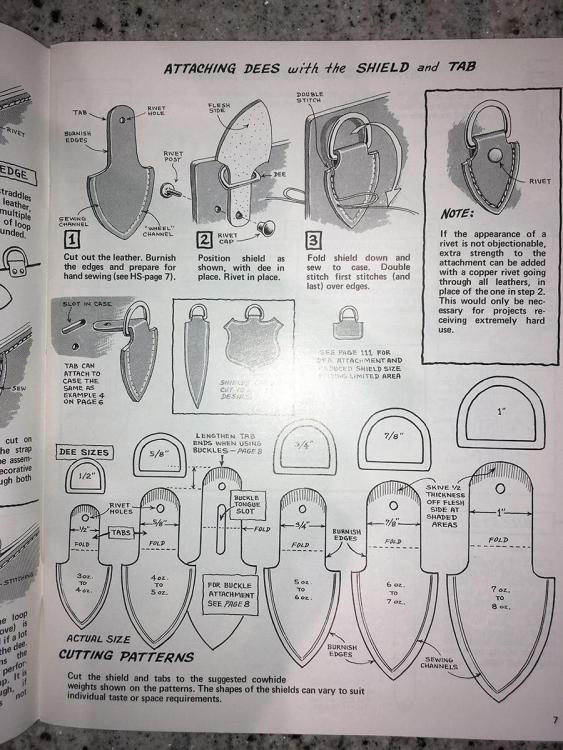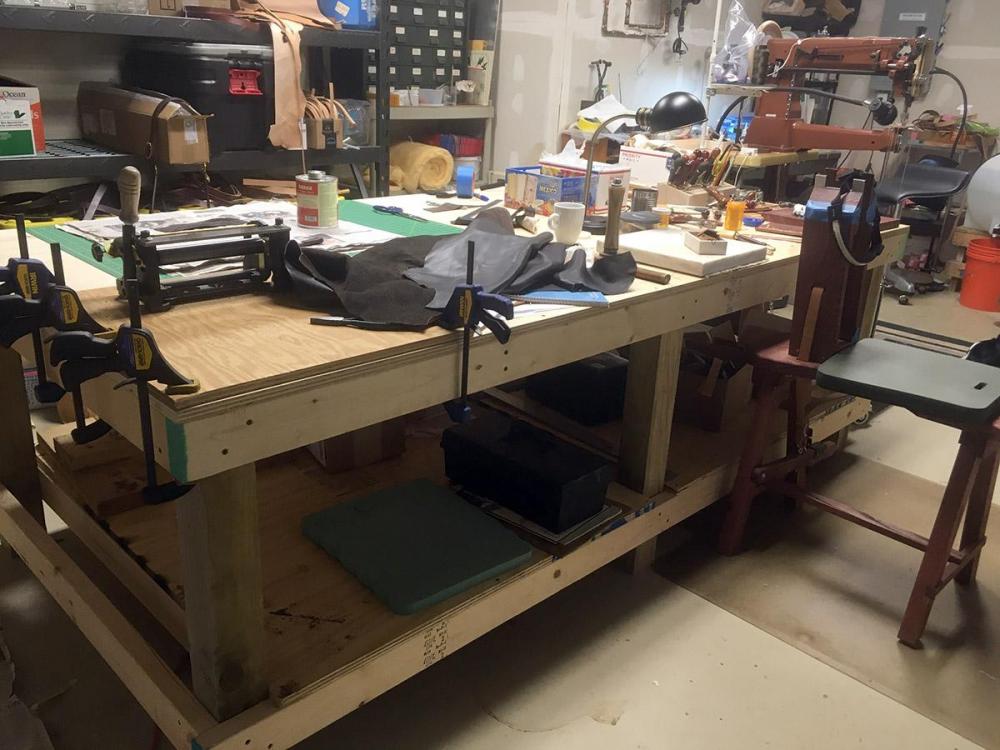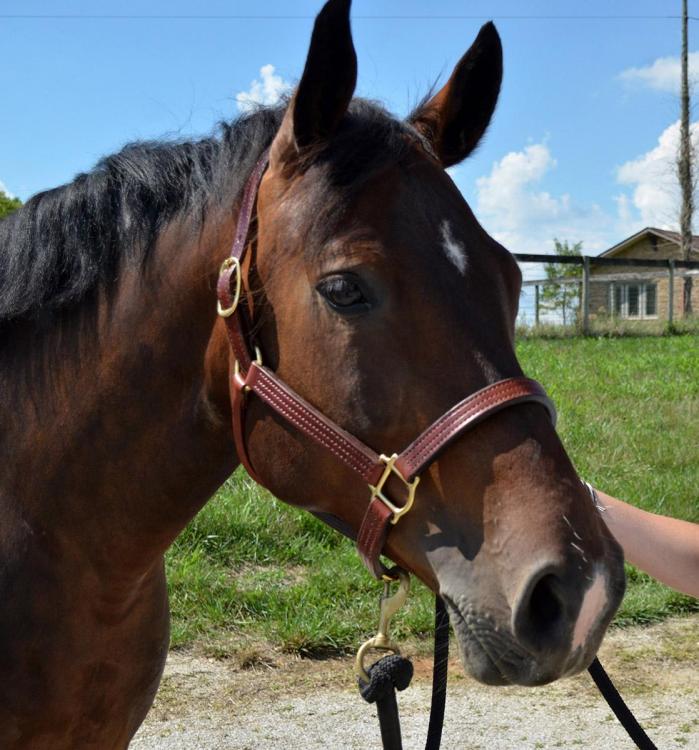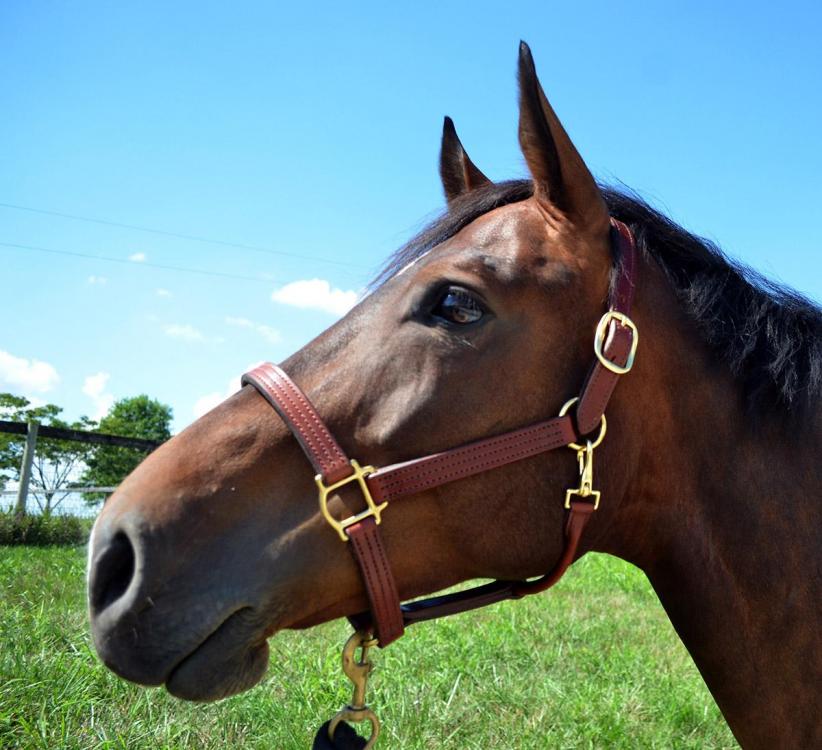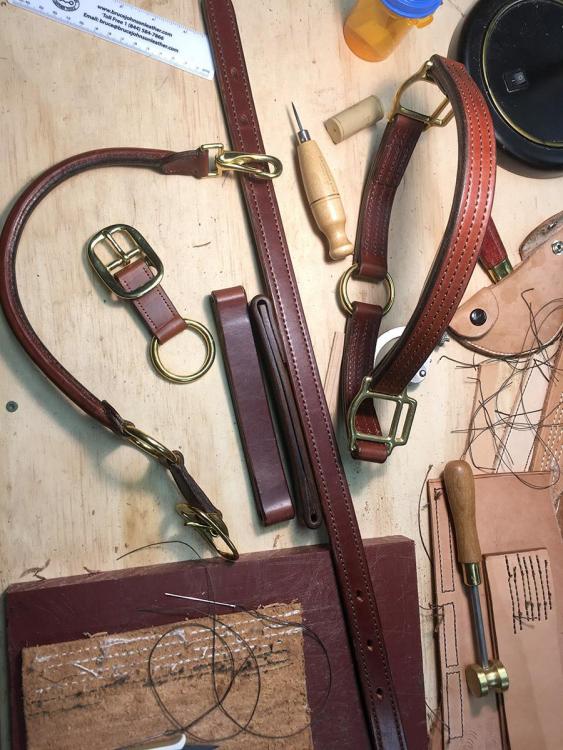-
Posts
1,284 -
Joined
-
Last visited
Content Type
Profiles
Forums
Events
Blogs
Gallery
Everything posted by TomE
-
Great to dream big. I dream of building a jumping saddle while honing my skills on bridles, reins, and halters. The more I learn about saddlery the less likely my dream becomes, but I'm becoming a better judge of saddle quality and fit. Feel privileged to learn this traditional craft and practice it at whatever level I can. @Key if you learn to hand sew there will be no shortage of projects that you can do.
-
Forget where I saw it but someone had sharpened a bicycle spoke to use as a fine awl for harness work. I'm thinking they were sewing 14 stitches per inch, which is out of my league.
-
A self-healing cutting mat from a fabric store is a handy item when squaring up the edge of a hide with a knife. A sharp round knife is ideal for making long, straight cuts but most any sharp knife will get the job done. For cutting straps you have a choice. The wooden strap cutter is inexpensive and effective, and the blades are more-or-less sharp out of the package (but even better if you sharpen them). A draw gauge is a handy tool for cutting medium width straps, but requires some practice and the blade must be sharpened before use. @bruce johnson has a helpful tutorial on holding the draw gauge at the Bruce Johnson Leather Tools website. The Cadillac (Rolls Royce?) of strap cutters is the plough gauge, especially for wide straps, but they are expensive and have a learning curve for sharpening and using the plough gauge. You will want to cut each strap along the full length of the hide, starting with the best leather along the back of the cow. You will notice the difference in substance at the butt (firm) versus the shoulder (spongey). The strongest/firmest straps come from the butt near the top of the cow.
-
Sewing with an awl is one of my favorite leathercrafting activities. You will need a stitching horse or pony, or saddlers clam to hold the work as you juggle the awl and 2 needles. Learning to sharpen an awl blade is essential to your happiness while sewing. No need to buy a fancy, sharp awl -- it will get dull and you'll need to sharpen it sooner or later. I mostly use Osborne #42 or #43 harness awls and shape the blade as I sharpen them. The points are too broad/blunt IMO so I put a more gradual taper on the point while sharpening the cutting edges. The awls eventually get narrower with repeated sharpening and those narrow awls are used for finer sewing. When I'm pushing through really thick leather (20+ oz) I use a peg awl haft with #44 or #45 awl. I think the ideal awl blade has a sharp point that pierces the leather, whereas the wider shank portion of the awl is relatively dull and stretches the hole as the awl is inserted. After making the stitch the leather relaxes and the hole closes around the thread. Highly recommend reading the Stohlman book on hand sewing leather, and videos from Armitage leather and JH Leather for sewing and awl sharpening methods.
-
Looks great. Hope the hip is doing well.
-
Very happy with the European style pricking irons from Rocky Mountain Leather. Using a sewing awl provides versatility in tidy sewing of odd shapes, very heavy leather (20+ oz), and complicated assemblies like sewing a fixed loop on a buckle turn. Stitching chisels generally create larger holes that don't match the thread size, which IMO defeats the purpose of hand sewing. I use awls of different sizes for fine (9-10 stitches per inch) and coarser (5-6 stitches per inch to match machine sewing) stitching. Highly recommend Stohlman's book on Hand Sewing Leather.
-
She's the real deal! Traditional saddlery skills applied to consumer goods. Beautiful craftsmanship and a sense of humor.
-
Another idea is to use a shield and tab to attach the double bar buckle to the bag. It would be even stronger if you sandwich the canvas between 2 leather shields and sew through all 3 layers. This illustration is from Stohlman's Making Leather Cases v. 1.
-
I built a frame with 6 legs made of 3" wooden fence posts and 2 x 4 runners, and covered with 3/4 inch sheet of plywood. You can stiffen it up by adding more crossmembers to the frame to support the top. I use the storage shelves underneath for --everything. I bought a cutting mat from Joann Fabrics and cover it with a flattened cardboard box when staining or gluing.
-
I use Weaver and Batz Corp for tack hardware. Mostly stainless steel and brass. I avoid zinc die cast and plated hardware for heavy use. Can see the plating chipping off after a few years in the barn. The brass and stainless look good for decades and are salvaged from broken tack.
-
Well done! The style and design are first rate. You will be a standout.
-
Neat to learn about the military issue draw gauge. This tutorial from Bruce Johnson helped me to up my game with a draw gauge. https://brucejohnsonleather.com/index.php/download_file/6881/202/
-
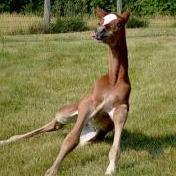
The Power of ' word of mouth' advertising
TomE replied to Handstitched's topic in Marketing and Advertising
We use it for our horse breeding farm and I'm confident it acts as a feeder to our website and a commercial sales site where we post the particulars of each horse for sale. Google reports the number of clicks per week on our website URL so I see how much traffic comes from Google. When we ask customers how they found us, they usually mention our website or the commercial sales site. Our clients are mainly from other states, so we depend on the internet to connect with them. Leatherwork is a hobby, and most of my work has been given to horse clients and friends. -

The Power of ' word of mouth' advertising
TomE replied to Handstitched's topic in Marketing and Advertising
A Google business page is free and shows up in the side bar on relevant Google searches. Displays your address, hours of operation, contact info, summary of your business goods and services, etc. It is also a way to accurately pinpoint your location for customers using the Google search engine or Google Maps app. If you really want to play the game, Google offers Webmaster tools to help increase traffic to your website and improve your search ranking. It's free, doesn't require a lot of effort, and connects you to folks that shop by Google and are perhaps outside your local sphere of influence. -
I'm enjoying the art. To me the imperfections make it authentic and add to the charm. Thanks for sharing.
-
If you search for threads containing "punch tube" you'll find advice for sharpening and lubricating punches, and different styles of tubes for heavy leather. I like the Osborne #153-10 frame with longer punch tubes that have a shallow taper in comparison to most rotary punches.
-
Wow! That's an amazing result. Congratulations to him. Hope you can see video of the rounds. What is the horse's name?
-
Thank you! Thanks, @Mulesaw. I do sew the round on a machine. I posted a summary on another forum here https://www.leathercraftmasterclass.com/forum-1/leathercraft-techniques/rolled-leather-strap. I think I have too much time on my hands.
-
I've added a wedge-shaped welt to the turns next to rings, in order to ease the transition in thickness so I can machine sew tight to the hardware. I used to finish these stitch lines by hand sewing because my machine couldn't navigate the sudden change in thickness. Big time saver on a triple stitched halter.
-
Maybe I'm the only one but I found these old manuscripts on oils and waxes used for currying leather to be very interesting. I mostly use bridle leather and didn't know the processes used to change the flexibility, water resistance, and strength of leather during the currying process. Lots of details, and some of the chemistry in these articles. The PDF files are too big to upload to this site so I put them on Dropbox. I'd welcome your suggestions of additional articles or books on tanning and currying leather. https://www.dropbox.com/s/01d6xwcd7ckabo8/Blockey - The Application of Oils and Greases to Leather.pdf?dl=0 https://www.dropbox.com/s/bzkyasugrgvg6dx/Newbury - 1940 - Oils%2C fats and waxes in the leather industry.pdf?dl=0
-
I would buy a relatively inexpensive wooden strap cutter for occasional use. I have an old Tandy version that looks the same as one I bought from Abbey England, and the blades from Springfield Leather fit them both. The wooden cutter is my preferred tool for very narrow straps < 1/2 inch wide. It will work even better if you can sharpen and strop the blade. If you're going to be cutting a lot of straps from hides you might consider a draw gauge, particularly for heavier straps. The Weaver Professional draw gauge is a nice tool IMO and you can buy blades from Weaver or Osborne. I'll paste a video below about how to grip the draw gauge. For wide straps, a plough gauge is ideal but that's a big investment in the purchase and time spent learning to use and sharpen it. https://fb.watch/eUXBx8U3G5/
-
Following on @Northmount's suggestion, how about a removable padded pocket or zippered case, held in place with velcro. Neoprene fabric is slick and padded (like a wet suit) and could be used to cover thicker neoprene sheet as a filler. If you prefer leather, I wrap neoprene with 3 oz cow hide for padded liners on halters and bridles. Assemble with Barge cement and sew it to a heavier leather backing.
-

Birthday Belt and gifts
TomE replied to Dwight's topic in Purses, Wallets, Belts and Miscellaneous Pocket Items
Thanks, @Dwight. That’s a true black. Stohlman advised using a base coat of green or brown before staining black. You’re getting great results with black Pro Dye. -

Birthday Belt and gifts
TomE replied to Dwight's topic in Purses, Wallets, Belts and Miscellaneous Pocket Items
That's a nice looking belt! What is your process for black dye? I've been starting with dark brown followed by 2 coats of black. I think I'm seeing a brown tint in the finished item viewed in sunlight.



